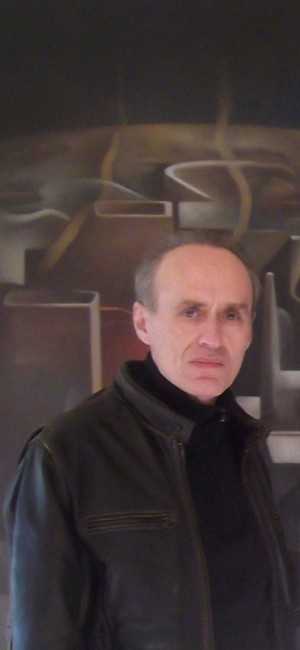Artist Roman Kriheli Transcends Time
Roman Kriheli is a painter who has achieved what few have done before him.
Born in Georgia, in the former Soviet Union, in 1956, he is an artist who has managed to transcend the chasm of time between the high Renaissance period and our own. By the age of 16, he was no stranger to international attention, and soon won First Prize at the Palace of Congress in Rome. In his presence, one can’t help but feel there is something (for want of another word) immortal in his search for his very being. By the time he moved to New York City, and became a leading artist in the Soho scene of the 1980s, he had exhibited in Tel Aviv, Rome, Brussels, Denver, and other galleries too numerous to mention. He continues his affinity for New York, and loves “the magical power of the city,” remaining true to a singular, yet eclectic, vision inspired by the likes of Titian and other great Renaissance masters.
Kriheli and I agreed to meet on a rainy, late November day in Yorkville, on the Upper East Side of Manhattan. True to the city’s capriciousness, the French bistro where we’d agreed to rendezvous was closed for a film location shoot, and the quiet Hungarian bakery on Second Avenue was filled to the brim with newcomers. Our third choice, a practically deserted sports bar nearby, was a charm. We settled into a corner table with its faded red checkered tablecloth and two steaming cups of coffee.
At first glance, my companion appeared to be unassuming, a middle-aged man of slight build, dressed in a basic black shirt, slacks and leather jacket. But whatever impressions I had of a pallid, ascetic temperament were soon washed away by his passion and the unwavering intensity of his gray-eyed gaze, at times almost child-like.
GALO: We’ve all heard about Beethoven sitting down at the piano at three-years-old and playing, but you say on your website that you picked up a paintbrush at three, and your father on your sixth birthday gave you a book on Michelangelo. What do you remember about that very early time?
ROMAN KRIHELI: Actually, I started drawing, not painting. I did my first painting when I was six. I was fascinated mostly by the beauty of animals. I was attracted to horses, dogs, even bears, and it was a kind of [an] inspiration for me. And I did landscapes also. Because the place where I was born in the city of Tbilisi, it’s an ancient part of the city–the capital of Georgia.
GALO: A large city?
RK: It’s not like New York, but it’s a pretty large city, and I grew up in the old part of the city where our part of the house was in a middle century castle. Our house was under the castle, it’s pretty ancient and it was very beautiful…very inspirational.
GALO: Living there, there must have been lots of passageways, lots of tunnels.
RK: Of course. I was a very active, wild child. I was running around, even to the places where it was difficult for most of the people to get there; very dangerous.
GALO: But you were small enough to get into those places.
RK: Yes. It was a very formative force to be surrounded by such extraordinary beauty. I even used to paint on the walls of these castles.
GALO: So you made your own murals on the walls.
RK: Exactly — science and some paintings; a combination of those.
GALO: Now, at 13 you met the Georgian painter, Yakov Nikoladze.
RK: Actually no. Nicolai was a pupil of Rodin but the art school was named after Nikoladze, who wasn’t alive then. But, at 13, I had a private teacher there — a very well-known Georgian artist.
GALO: Is that when you first started to paint? When you were studying under the teacher?
RK: No, I was already painting, but it was a different experience.
GALO: And your family, they were able to provide you with the oils, the paints that you needed at that time.
RK: Yes, mostly oil. That’s what I do now, too. It gives you limitless possibilities in painting.
GALO: You mentioned again, perhaps in your late teens, you became involved with the Free Art Movement? Now how did that play into what happened with this repressive society?
RK: It wasn’t quite as repressive as other parts because Georgia was a part of Russia then. But we had a group of young students who–how do you say—weren’t fully in agreement with the official program of the school. It wasn’t a freedom movement in the official sense.
GALO: In the early days of Impressionism, the artists were trying so hard to get into the official annual exhibits. There were some pretty strong strictures against a lot of their work. But they stayed strong, whether Impressionists or Fauvists. They kept to their own image.
RK: Exactly.
GALO: How large was the movement?
RK: I’m not sure about that. It wasn’t very large. We just were a circle of friends, crazy about painting. Wanting to do what we wanted to do, most of the time.
(Article continued on next page)

